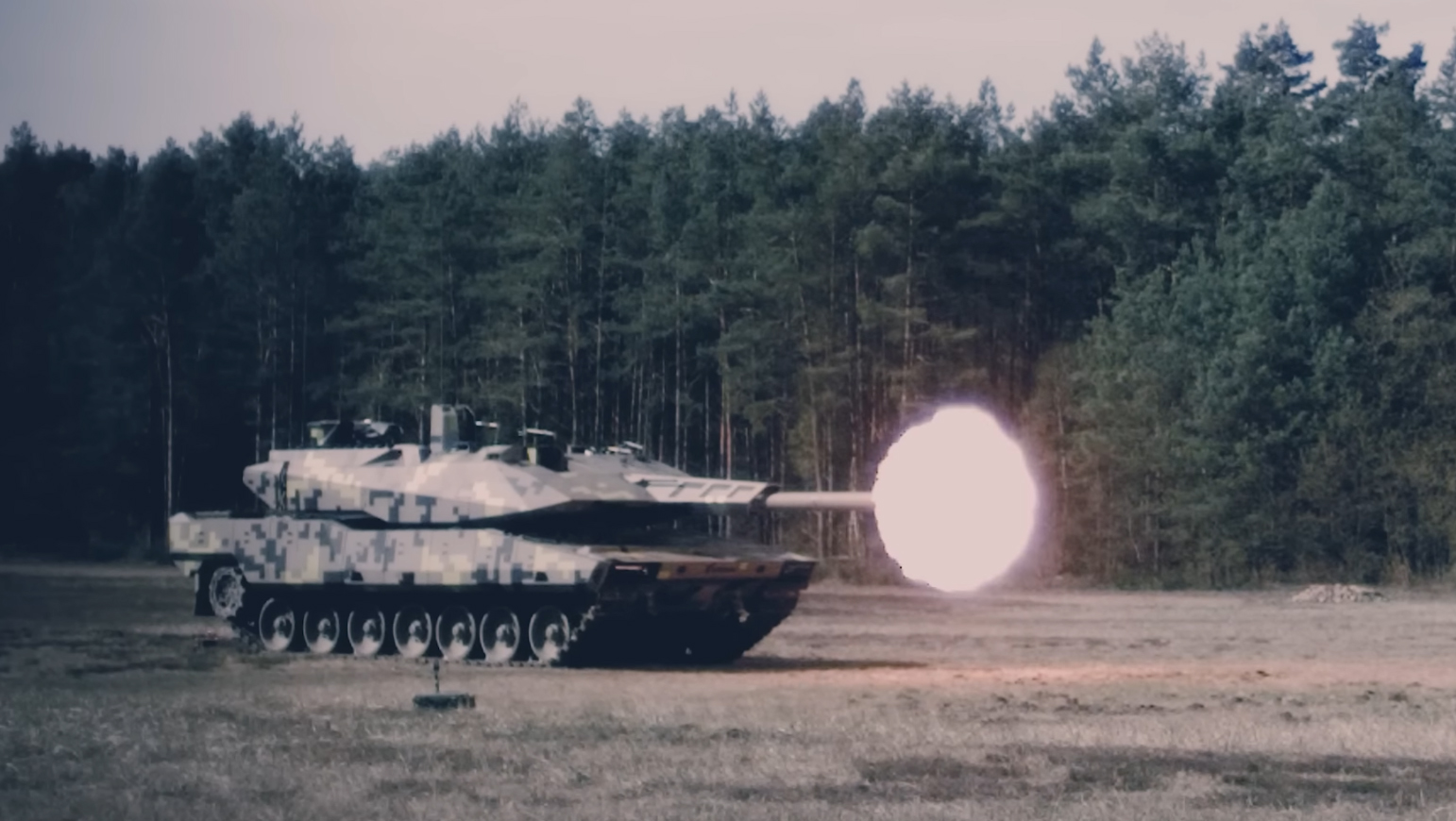German defense contractor Rheinmetall unveiled its new main battle tank, the Panther KF51, which is the first time the name has been used for a German fighting vehicle since 1945 — the last year of the Second world War.
The manufacturer claims the 59-ton, fully digital-controlled tank will shoot farther and aim far more accurately than its current Leopard 2. The Panther KF51s (KF stands for the German “Kettenfahrzeug,” which translates to “tracked vehicle” in English) are equipped with the same 1,475-horsepower diesel engine as the Leopard 2 tanks, but since they are more than 10 tons lighter than their predecessors when fully armed, they will be much more agile than the Leopards, according to Hungarian news outlet VG.
Analysts say it is a little surprising that the German arms manufacturer has not opted for a more modern propulsion solution, but its choice is logical, as it will be able to produce diesel-powered tanks much faster than a hybrid-powered version.
[pp id=8409]
According to Rheinmetall CEO Armin Papperger, the new Panther is an “apex predator among tanks,” which will be needed now that a war with heavy weapons is taking place in Europe again. According to Papperger, Panthers can work together well with the Lynx infantry fighting vehicle, which was also developed by Rheinmetall and will soon be manufactured in Hungary. The head of the German company expects orders to flow to his company soon.
The new Panthers are equipped with automatically loaded 130 mm smoothbore cannons, which is larger than the Leopards’ 120 mm cannon. The Panther cannon, developed by Rheinmetall, can fire both kinetic and programmable shells and can carry 20 shells at a time. A 12.7 mm machine gun is also standard, but a variety of remotely controlled weapon systems (RCWS) can be incorporated into the tank.
The vehicle, unveiled in Paris, was fitted with Rheinmetall’s proprietary Multiple Remote Controlled Weapon Station, the NATTER 7.62.
Rheinmetall indicated that its Panther system features a “ground-breaking, fully integrated, comprehensive, weight-optimized survivability concept,” that features reactive, active, and passive protection technology. This includes a Top Attack Protection System (TAPS), which will help protect against missiles like the Javelin that have been so effective against Russian tanks. In addition, the tank features the ROSY smoke obscuring system to help the tank escape or hide its position. However, the best element of the tank’s survivability system is its the KE protection armor, which Rheinmetall stated helps increase protection levels on the tank without increasing weight.
[pp id=36005]
Although its firepower rivals that of heavy tanks, Panthers are actually medium tanks, not only in weight but also in size, so they are easier to transport; they can be loaded on railway cars and fit into railway tunnels without disassembly, which cannot be said about the Leopards or the M1 Abrams tanks.
The German company is building a combat vehicle plant in Zalaegerszeg via a joint investment with the Hungarian state, where Lynx is expected to produce armored infantry vehicles.
According to Handelsblatt, at least one Central European country is considering purchasing the Panther just introduced. In addition to Hungary and Slovakia, the Czech Republic must also develop its forces if it is to meet the expectations of NATO members.






